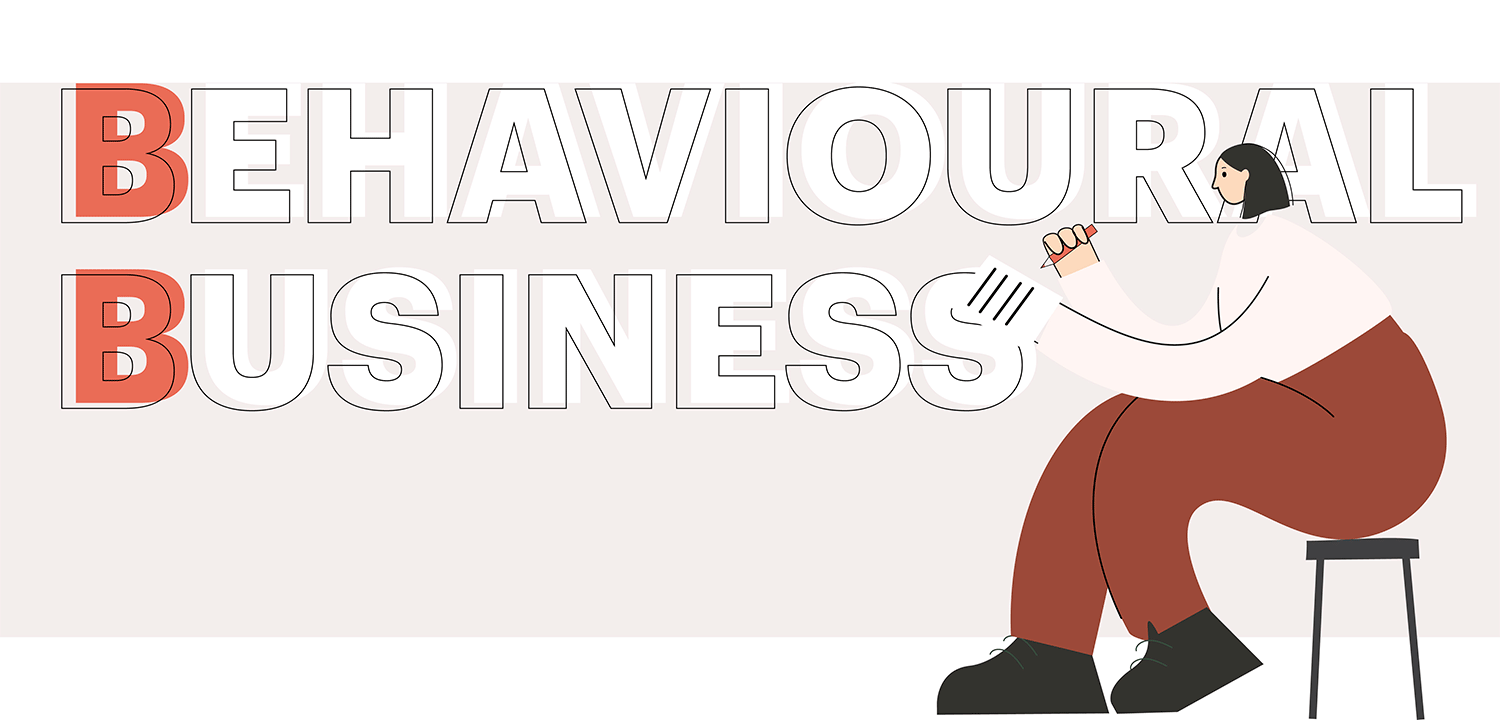A behavioural business is an organisation where most people inside it can use behavioural science techniques to improve what they do.
Which, you know, sounds lovely in principle doesn’t it. But it does beg the question, ‘Why should anyone invest the time and effort to become a business like that?’
Well, there are A LOT of reasons. But here’s four to get us started.
1. Being able to identify the behavioural barriers to business success
Take customer journeys and UX design, for example. Prospects and customers arrive on one page of your website, and, depending on the purpose of the site, are guided towards making some kind of buying decision.
There is a huge amount going on in your customer’s mind as they go through a customer journey like that.
They’re battling their status quo bias, risk aversion, loss aversion, present bias, analysis paralysis, devil effects, availability bias, and many, many more besides.
When your team is aware of these biases and heuristics. they can actively head them off before they ever become an issue. That’s just one example too – the same principle applies in campaign messaging, change management, product design and so on. Once you understand the reasons that people aren’t behaving in the best ways for them, you can plan how to counter them with a raft of powerful psychological techniques.
2. Knowing how to overcome behavioural barriers to nail objectives
It’s one thing to know that your people are experiencing risk aversion when they hear the news of your big merger with another company – but it’s another to know what to do about it.
The people in charge of these kinds of announcements are going to be the most experienced in the whole organisation. They might even be an external agency or management consultancy. Whoever they are, through decades of trial and error, their experience will have landed on what they’ve intuitively found is the best way to guide people through such a change.
In a behavioural business, that intuition can become concrete intention. Not only are your people aware of the behavioural barriers between them and a smooth change curve, they also have scientifically proven tools and techniques to be able to overcome them intentionally too.
3. New ways to make existing processes more efficient and effective
Say you need to send a company-wide email out to let people know they need to take a new anti-bribery and corruption course. Your comms team uses all their experience to write the email letting people know, and once it’s written it’s all ready to send.
But are they missing a behavioural trick here? What if judicious use of reciprocity bias could reduce the need for follow-up clarification calls by 40%? What if a sprinkling of social proof messaging could encourage colleagues to take the course far earlier? What if sending the email from the right messenger boosted training completion rates by 30%?
Every situation where you’d like an audience to take some kind of action can be boosted like this, and it often only takes a few tweaks to the message to make a huge impact. In a behavioural business, your team has the tools to make all your messages work harder and land with more impact.
4. A fail-fast culture of iterative innovation
This is something Jeff Bezos has been banging on about for years – ‘We believe in failing early and iterating until we get it right’. Now there may be a fair bit to be desired about Jeff Bezos’ approach to management, but his culture aside, this is the working style that has made Amazon one of the most successful businesses in the world, and Bezos the wealthiest person along with it.
The spirit of applied behavioural science is similar. Often there’ll be an existing process which has achieved some success at encouraging people to take some kind of action, but also a perception that there’s still plenty of further potential that isn’t yet being realised. Behavioural scientists get called in at these moments to find ways to get more people to take that desired action (without breaking the bank on new IT systems, incentives, AI or anything else).
The scientists then work up several ways to achieve that goal by applying different behavioural insights to the process, and testing each one with small groups of real people to see if they improve the status quo. When they find ones that do, they scale up those improvements to wider and wider audiences until the business can get the absolute most bang for its buck out of that particular communication. And that can mean making or saving an absolute fortune in call handling time, sales, fewer complaints and so on.
In a behavioural business, every team has the ability to take this iterate, test and refine approach, so no matter what you’re trying to encourage people to do, your teams have the tools and the techniques to maximise whatever results they’re looking for.
Just remember, you won’t be able to do it alone.
If you’re interested or trained in applying behavioural science then you’ll probably have experienced how hard it can be to bring the rest of the business along with you.
Even when you’re churning out improvement after improvement, quarter after quarter, chances are you’ll still only be scratching the surface of the potential of how a wider application of behavioural insights could improve your businesses’ key metrics.
In a behavioural business, that all changes.
The teams around you are all trained to use behavioural techniques to improve your processes, uptakes, sales, engagement, recruitment and more. And it means that as a business you can innovate so much faster, and use the same resources to achieve so, so much more than ever seemed possible before.




